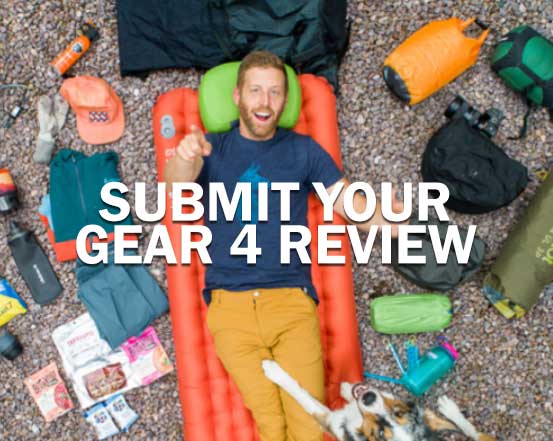Selecting cold weather backpacking gear can be an extreme challenge for a lot of people. It's important to have the right skill set, but all the know-how in the world still isn't worth much without the proper gear. I know the idea of spending all day and night in crisp, and possibly freezing temperatures may not sound appealing, but if you have the necessary goods, it can be a lot of fun.
I just got back from a backpacking trip in West Virginia and was able to reap the benefits of several key items. Depending on where your turf is, some or all of these may enhance your experience too. Here's what's been working for me.
The Tent: MSR Access 1 (1-Person, 4-Seasons)
If you're going to be pushing your backcountry adventures late/early in the year and expect to face heavy snow and/or strong winds, then a 4-season tent will be the way to go. However, this doesn't mean that you need an over-the-top, expedition-style shelter. In the past, I used a bulky 2-person tent that tipped the scales at 10 pounds! Even though it kept me cozy, that is way too much weight to be taking on an otherwise casual hiking trip.
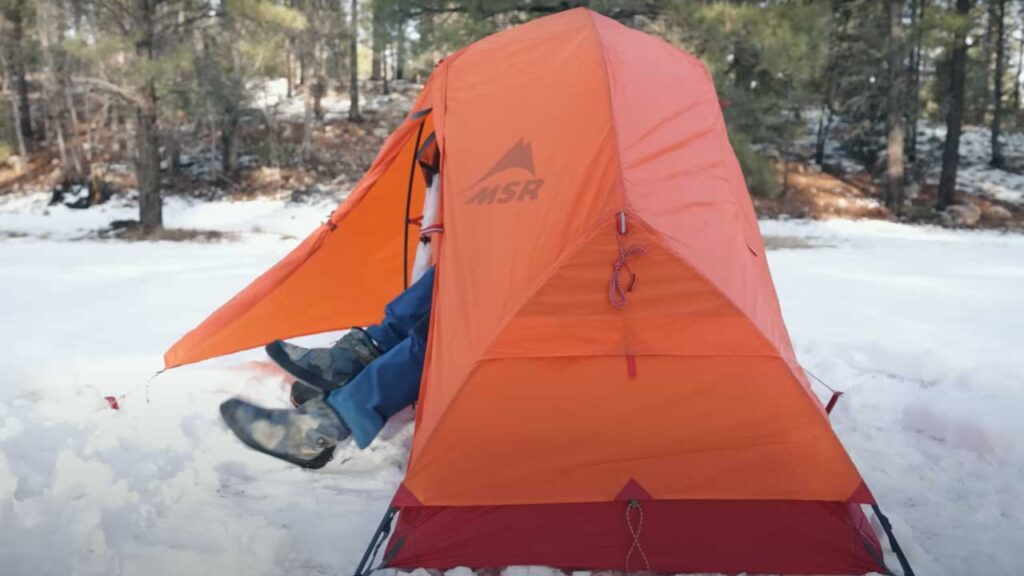
So I was happy to find MSR's Access 1 4-season tent this year. It weighs 3 pounds, 8 ounces, which is way more realistic for most people. One of the biggest differences of a 4-season tent is the drastic reduction in mesh.
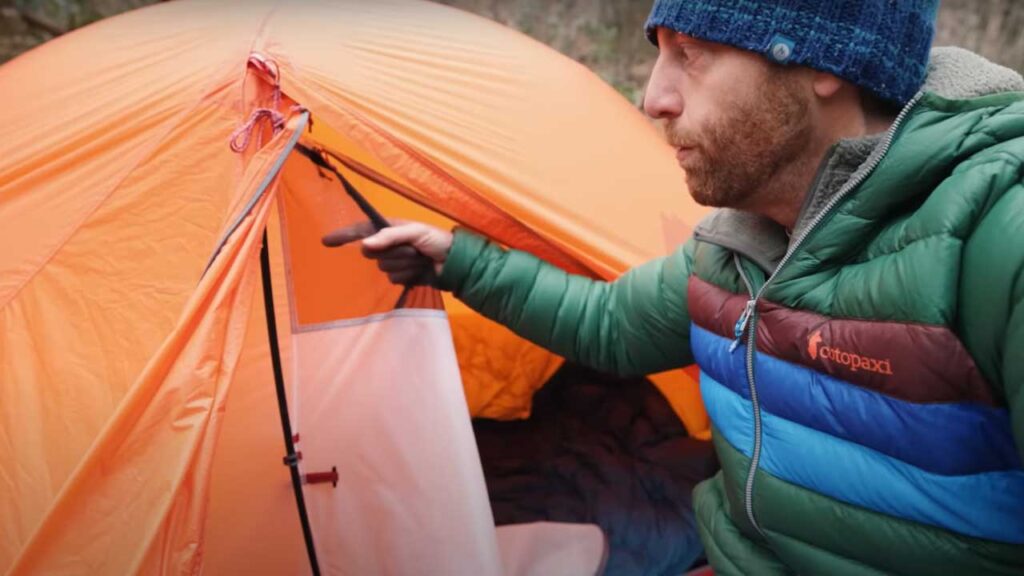
A solid canvas maintains internal warmth better, but at the expense of ventilation. So the challenge becomes managing the moisture that accumulates inside. This is an expected trade-off, but be sure to open both vents (in the case of the Access 1) in order to reduce the build-up as much as possible. For my most recent outing, the nighttime temperatures dropped into the low 20s (Fahrenheit), but despite waking up to a bit of dampness inside the tent, I still had a pleasant sleep. And that's the key.
Therm-a-Rest Parsec Sleeping Bag: 0-Deg (F) Down
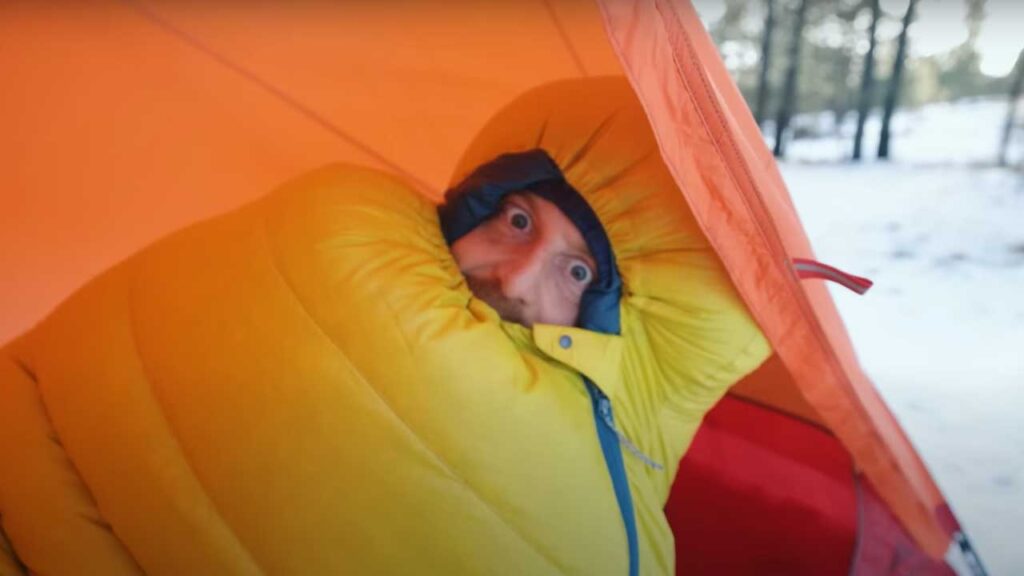
When it comes to staying warm, dry, and making sound economic decisions, the Therm-a-Rest Parsec 0F/-18C Sleeping Bag has to be a top contender. This thing comes in at a fair $530 – $620 (USD, depending on the size), which is far less than heavy-duty (i.e. -10 to -20F) expedition bags, but it still has some clutch features for those winter camping trips.
Nikwax Hydrophobic Down
It is stuffed with 800-Fill Nikwax Hydrophobic Down, which is a more environmentally-friendly way to treat the individual feathers so that they repel moisture and dry faster. This means the down won't clump up as easily and you'll stay warmer, longer.
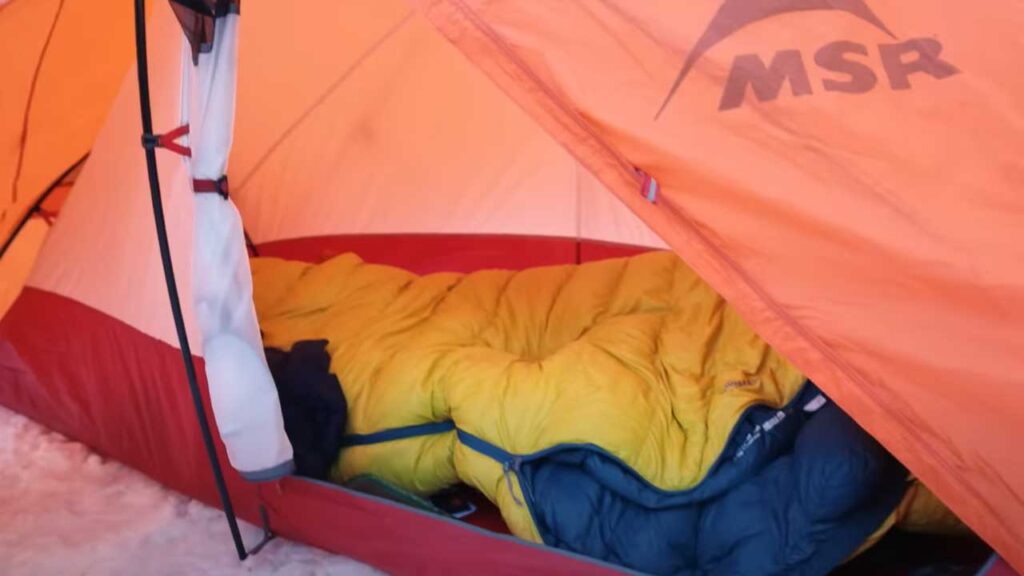
I think the feel of the Parsec's fabric is right up there with the most comfortable that I've experienced. And then the little touches really help elevate this bag even further. The cell-phone pocket helps keep your battery alive through those cold nights, and the air-mattress straps anchor you comfortably in place, even if you stir frantically while sleeping.
Draft Collars for Cold Conditions
And finally, the Parsec has a draft collar, is critical for getting a quality sleep in cold conditions. And just a friendly reminder that the 0-degree (F) rating is this bag's lower limit. The comfort-rating for the Parsec is 14-degrees (-10C).
Check out my article: Snowstorm Camping and Sleeping in Cold Weather
The Sleeping Pad: ZenBivy Light Mattress
The ZenBivy Light Mattress, for instance, is an R-5 rated (the minimum R-value, in my opinion, for winter conditions), ultralight inflatable mattress. When it comes to cold-weather camping, you have to use a properly insulated base in order to get the most out of your winter sleeping bag.
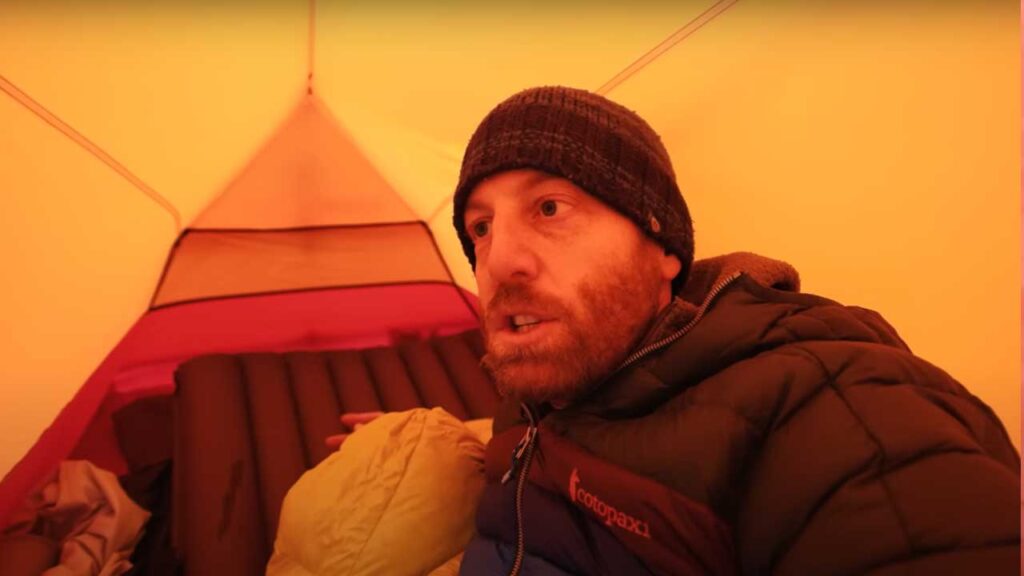
Another important aspect to note is the overall size of the mattress. The ZenBivy is 25-inches-wide by 77-inches-long, which is 5 more inches across each dimension than the industry standard. This extra space makes it not only more comfortable, but warmer too. The most insulated pad in the world can't do much for you if you roll off the edge. Or if your feet are free floating off the end.
Fleece Mid Layers
My favorite addition to my winter backpacking wardrobe has been the Dawa Sherpa Fleece by Beyond. It has a welcomed weight to it. A little extra weight never hurts when it's chilly, ahem… The fleece has a great next-to-skin feel, and I always love being able to flip up a generous hood to further boost the coziness factor. It's a beauty layer to wear around camp, but also to sleep in. Plus, $80 (USD) is a pretty solid bargain for a piece like this.
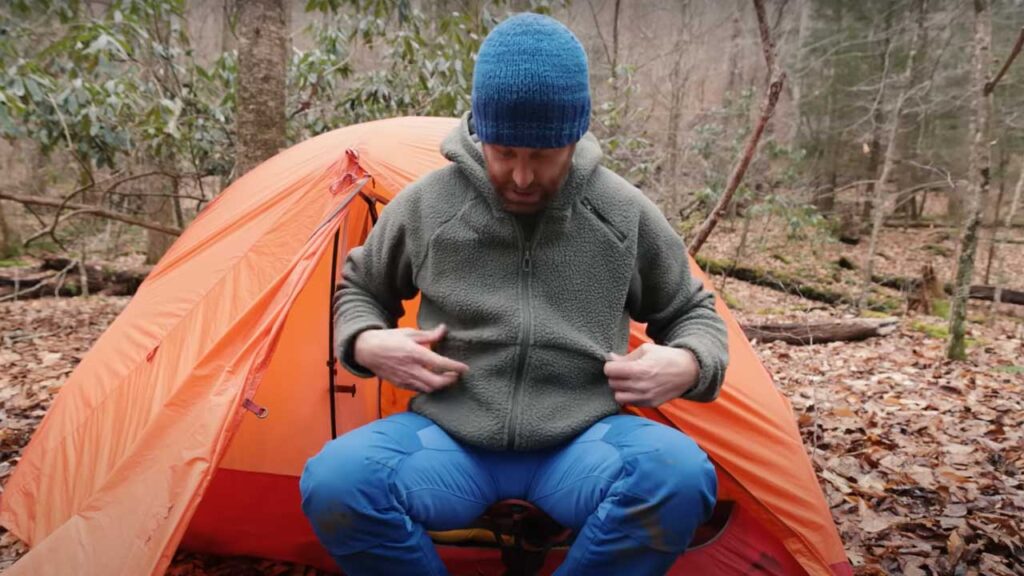
Cold Weather Backpacking Pants
This is my second winter rocking the Fjallraven Keb Trousers. They're thick enough that I often don't even need long johns underneath. I get a little toasty down there while moving about, I can unzip the vent pockets. I know $235 is steep for a pair of slacks, but these things are well-built for hardy adventures.
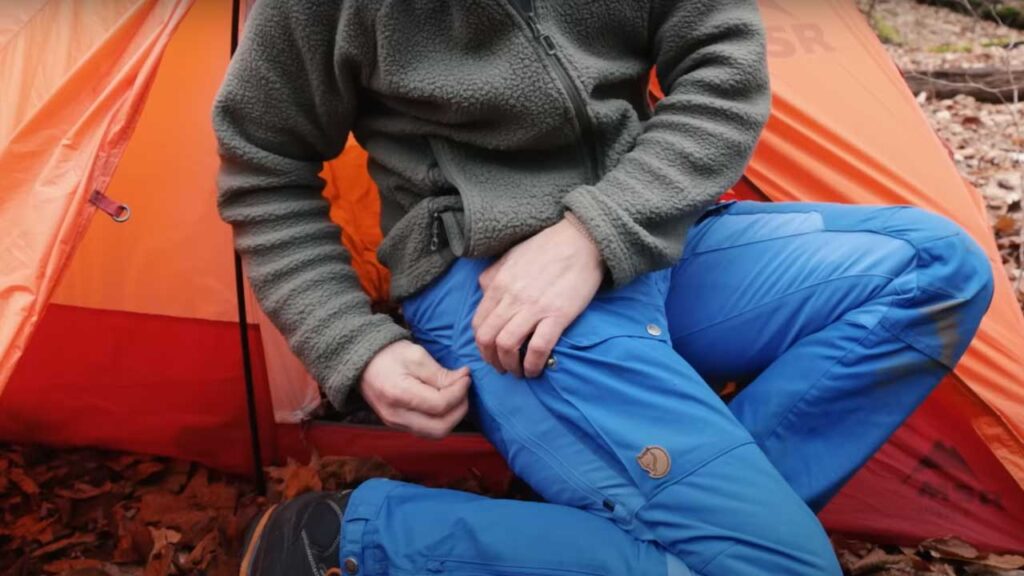
Cold Weather Sleeping Pants
When settling into camp for the evening, I can't say enough good things about a comfy pair of insulated pants. They're essentially a more plush, more fashionable version of long johns. My personal favorite pair has been the Shadow Insulated Snow Pant by Outdoor Research ($179 USD).
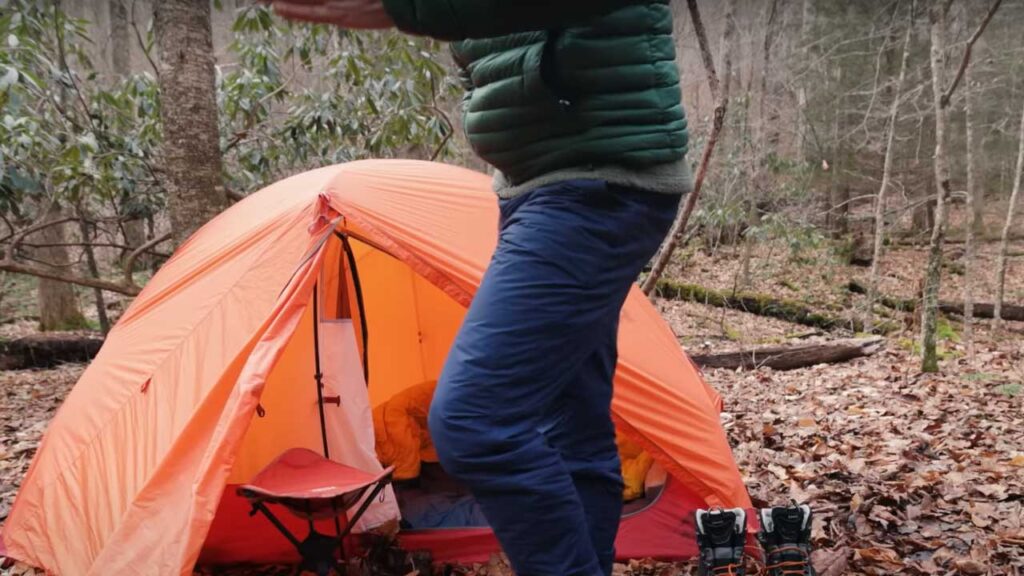
I like to pop them under my Keb Trousers before getting dinner going. When it's time to turn in, I can strip off the outer layer and sleep soundly in these tapered puffy pants. I don't recommend hiking in these. When considering backpacking in the winter, you have to plan a little extra for those dormant periods around camp when your internal engine is no longer generating the same heat.
Foolproof Footwear
Down booties are a game-changer. If you like camping in the cold, down booties are the perfect things to change into after shedding your hiking boots. I'll use them for bumming around camp, and if it's cold-enough, I'll sleep in them too. This approach not only insulates a poorly-circulated region of your body, but it also removes a barrier to getting up to pee in the middle of the night.
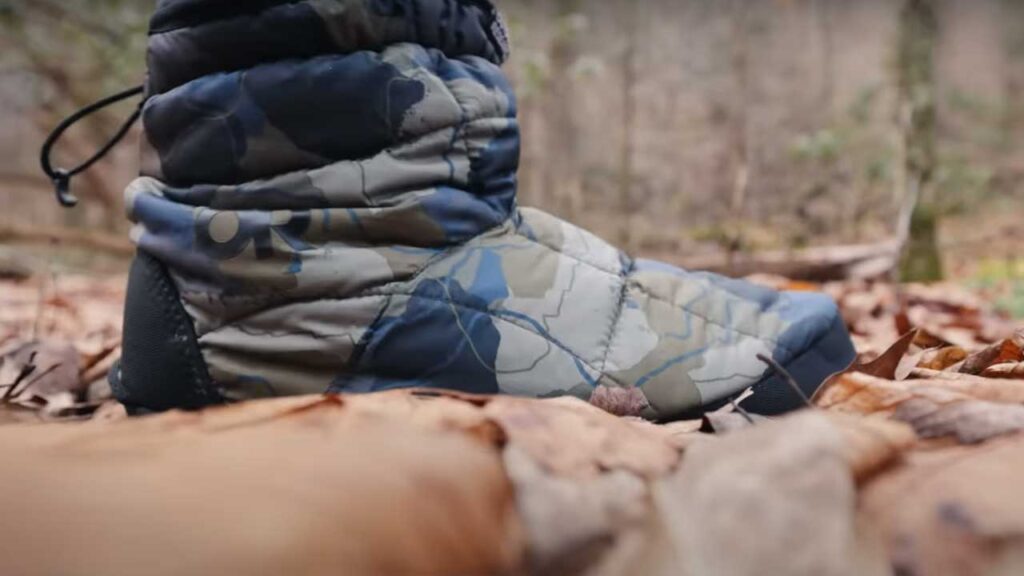
If you already have your footwear on then you'll be much more likely to heed the call the moment it arises (which will drastically improve your sleep afterwards). I recommend the Tundra Aerogel Booties by Outdoor Research. They come in a few killer styles and will only cost you $89 (USD).
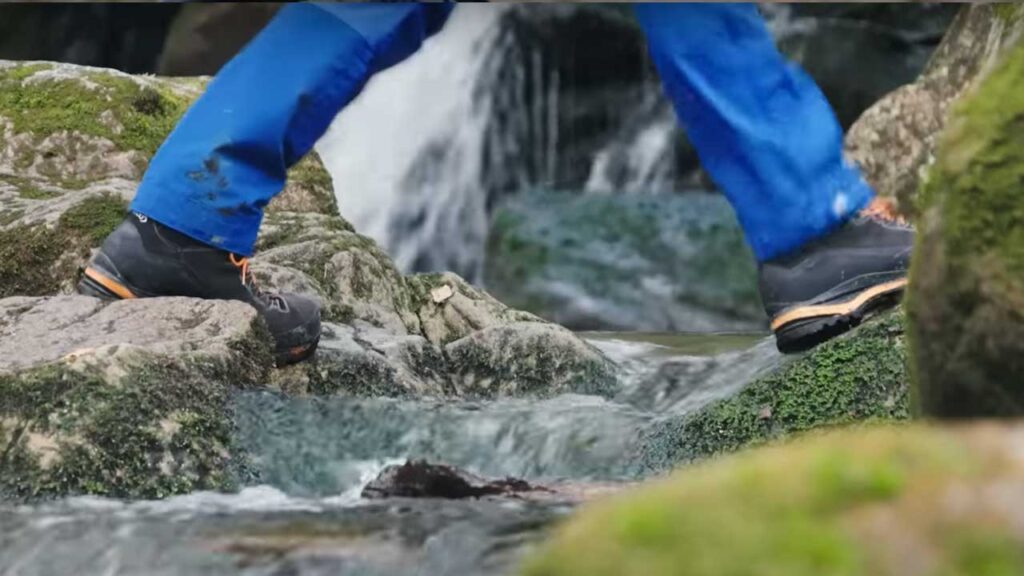
One of the most vital pieces of cold-weather gear you can get is a good pair of boots. It's so important to keep your feet not only warm, but dry. Especially if you're hiking through snow, your toes can quickly turn to popsicles if they're not properly protected. My saving grace this season has been the SuperAlp GTX by AKU. This pair is on the premium end of the price spectrum ($330 USD), but your feet will thank you once you get out there and mix it up this winter.
Elevate Your Camping Experience
You may have heard me talking about Grand Trunk's Compass 360 Degree Stool in the past, but it's relevant again here. If you're hanging around camp in the winter, you'll want to make sure that you're elevated off of the cold hard ground. Otherwise, your body heat and morale will be sapped in no time.
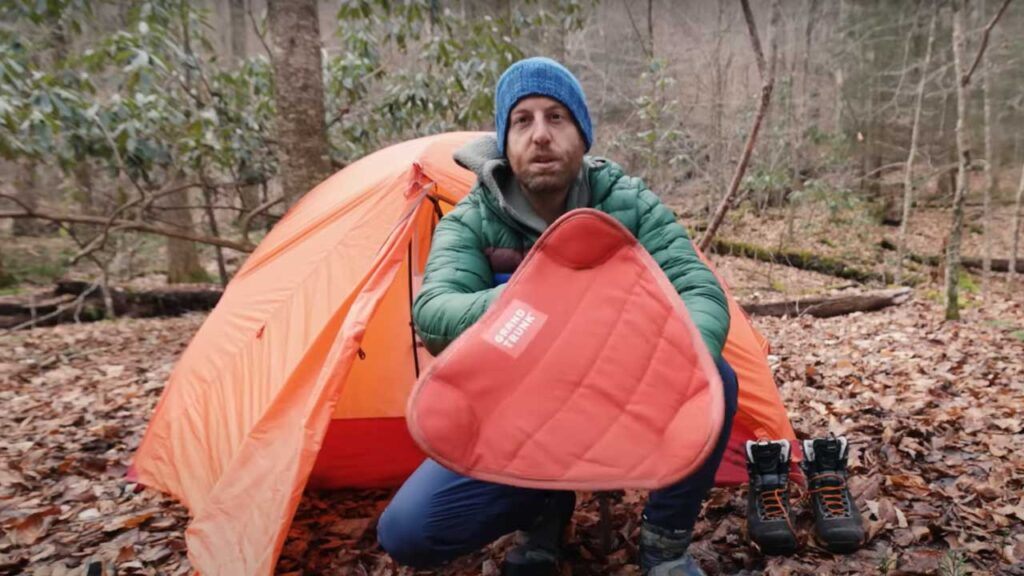
What I like about this swivel stool is that it weighs only 1 pound. It set me back a mere $60 (USD). After a couple of hours sitting on this thing I do find myself wishing that it had a backrest. Given how packable and functional it is, I think it's a sufficient solution to an easily overlooked problem.
Those are my Fresh Gear Friday items for cold weather backpacking gear. I hope you've spotted a few gaps in your arsenal. I hope this post will motivate you to go camping further into the season than you previously thought possible (or desirable). For more year-round backpacking tips and gear reviews, head on over to BackpackingTV.

Gear used in this review includes:
Tent: MSR Access 1 (1-Person, 4-Seasons)
Sleeping Bag: Therm-a-Rest Parsec Sleeping Bag: 0-Deg (F) Down
Sleeping Pad: ZenBivy Light Mattress
Down Jacket: Cotopaxi Fuego Hoodie
Fleece Top: Dawa Sherpa Fleece by Beyond
Pants: Fjallraven Keb Trousers, Shadow Insulated Snow Pant
Footwear: Tundra Aerogel Booties by Outdoor Research, SuperAlp GTX by AKU
Camp Stool: Grand Trunk's Compass 360 Degree Stool





